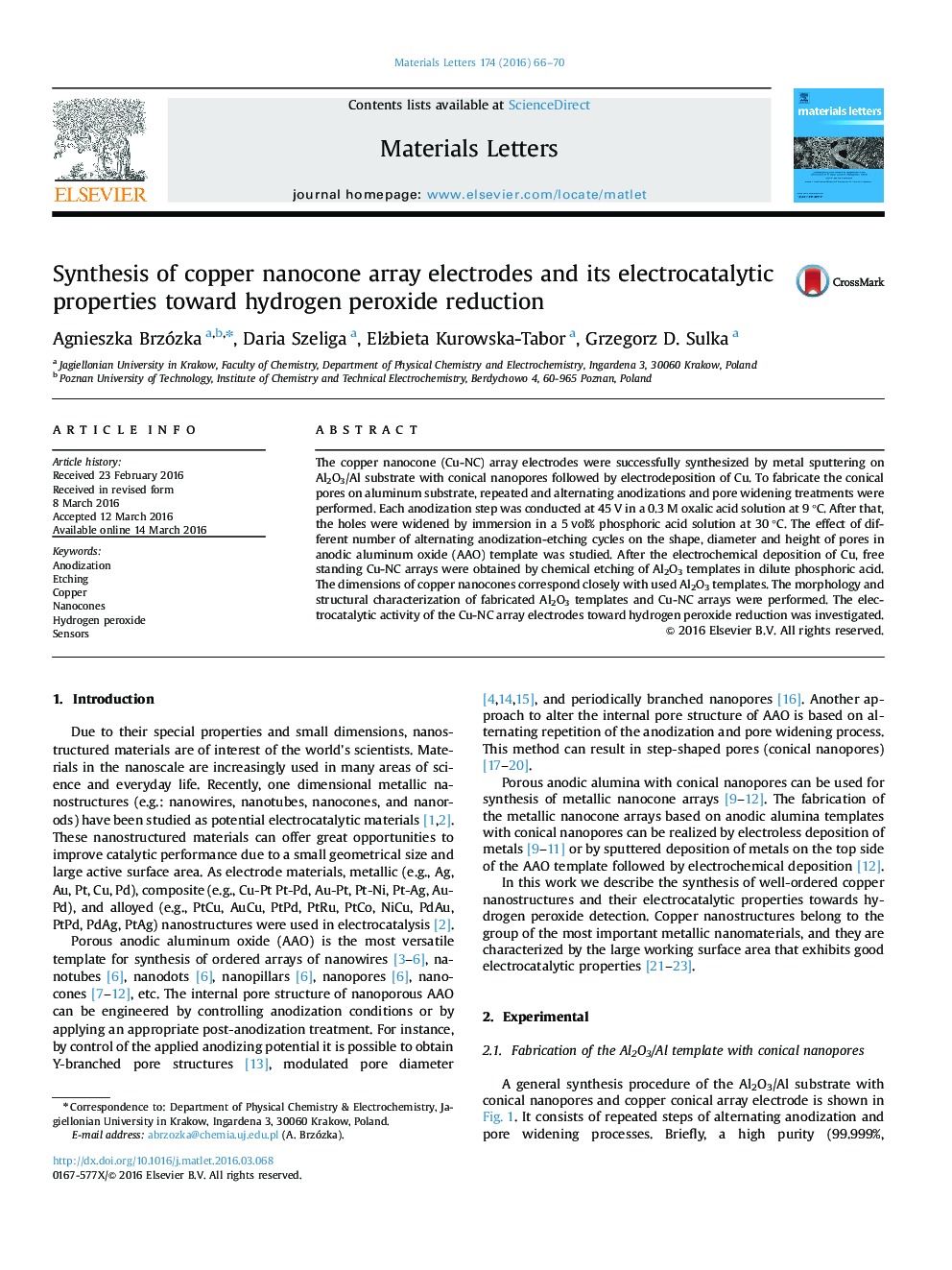| Article ID | Journal | Published Year | Pages | File Type |
|---|---|---|---|---|
| 1641410 | Materials Letters | 2016 | 5 Pages |
•Al2O3/Al with conical pores was formed by repeated anodizations and pore widening.•Cu nanocons (Cu-NC) was synthesized by templating method and electrodeposition.•Non-enzymatic Cu-NC electrode was used as sensor for hydrogen peroxide detection.•LOD and LOQ values for the Cu-NCs electrode were 0.18 mM and 0.62 mM, respectively.•The sensitivity of the Cu-NC sensor was estimated to be 8.73 µA cm−2 µM−1.
The copper nanocone (Cu-NC) array electrodes were successfully synthesized by metal sputtering on Al2O3/Al substrate with conical nanopores followed by electrodeposition of Cu. To fabricate the conical pores on aluminum substrate, repeated and alternating anodizations and pore widening treatments were performed. Each anodization step was conducted at 45 V in a 0.3 M oxalic acid solution at 9 °C. After that, the holes were widened by immersion in a 5 vol% phosphoric acid solution at 30 °C. The effect of different number of alternating anodization-etching cycles on the shape, diameter and height of pores in anodic aluminum oxide (AAO) template was studied. After the electrochemical deposition of Cu, free standing Cu-NC arrays were obtained by chemical etching of Al2O3 templates in dilute phosphoric acid. The dimensions of copper nanocones correspond closely with used Al2O3 templates. The morphology and structural characterization of fabricated Al2O3 templates and Cu-NC arrays were performed. The electrocatalytic activity of the Cu-NC array electrodes toward hydrogen peroxide reduction was investigated.
Graphical abstractFigure optionsDownload full-size imageDownload as PowerPoint slide
